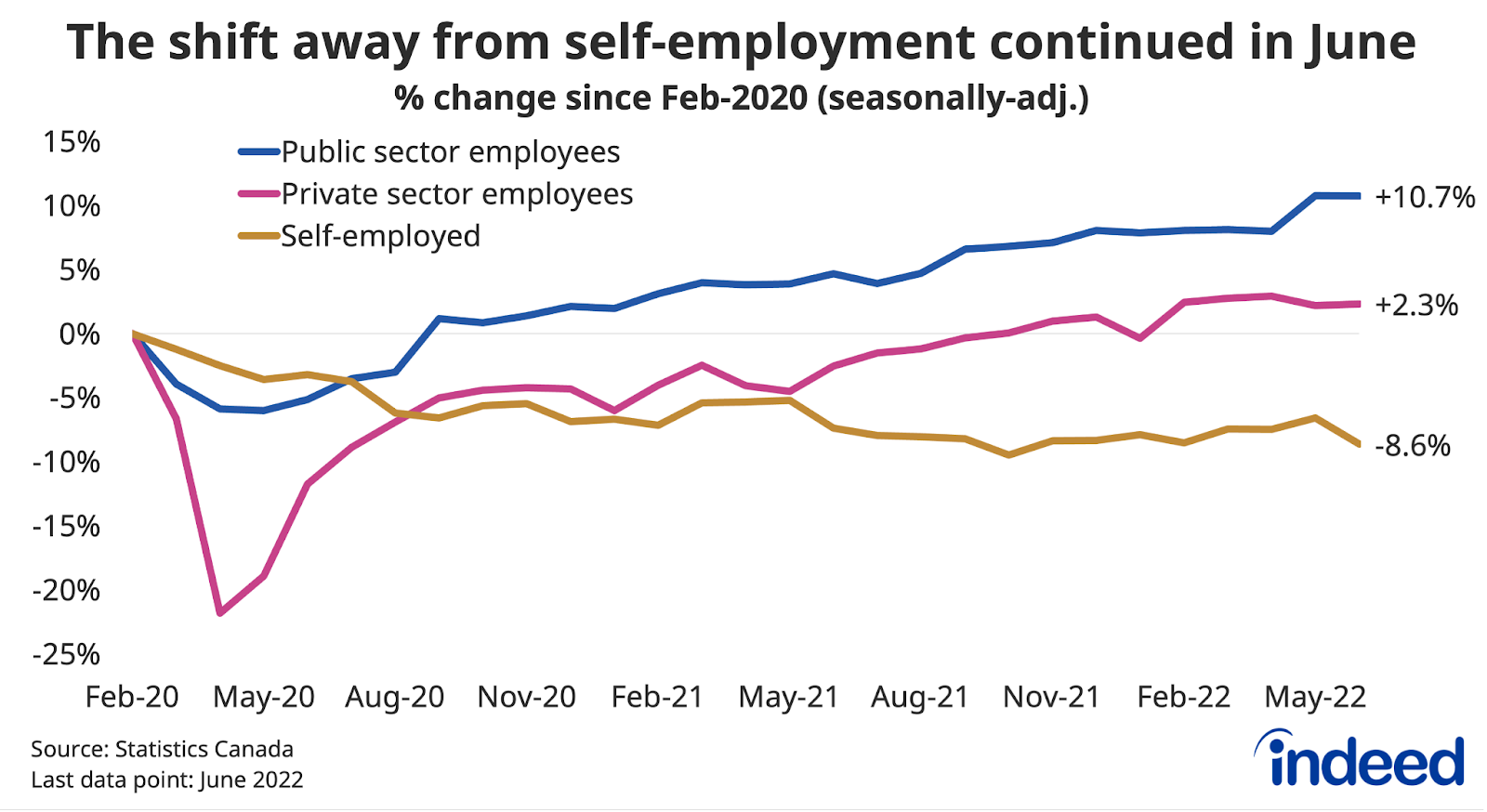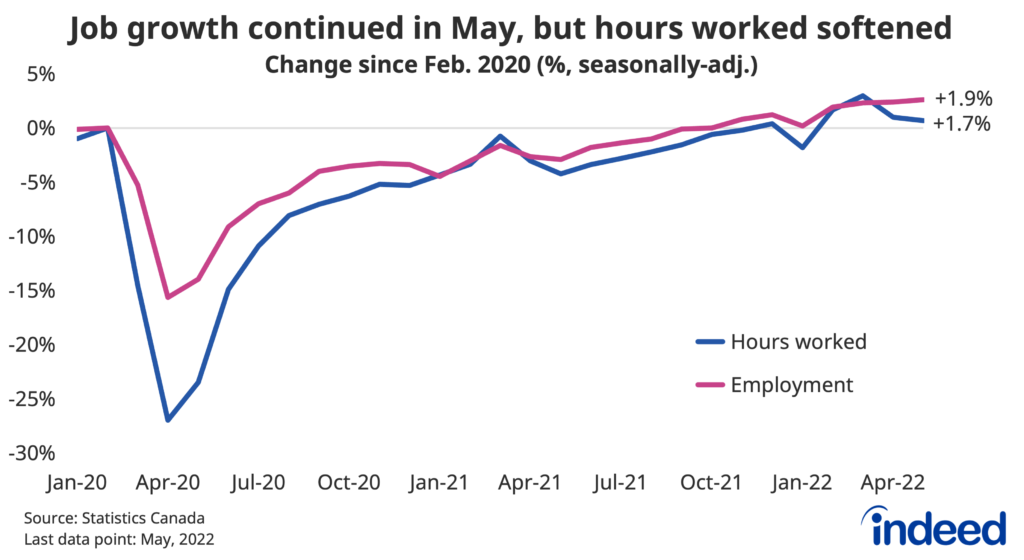The signal from the June Canadian job numbers isn’t exactly straightforward. The headline number was disappointing, showing the first employment decline not directly tied to an upswing in the pandemic since the crisis began. Not what we want to see when the global economy is on edge. At the same time, the number of hours worked in the economy rose at a solid pace, after slipping over the prior two months, inconsistent with a major shift in momentum.
The composition of the decline in employment was also puzzling, as it was concentrated in somewhat surprising segments of the labour market. Falling self-employment more than accounted for the overall net decline, while there was outsized weakness among those 55 and older, reversing earlier gains. At the industry level, while there has been discussion about layoffs in certain white-collar sectors, employment was steady in professional and technical services, as well as in finance and real estate. Instead, there were drops in retail and wholesale trade, as well as health care, education, and accommodation and food services, among others. All to say, we should take the headline drop with a grain of salt in the context of the macroeconomic situation.
Just as notable a development in June was an upward shift in wage growth, which hit a 5.2% year-over-year rate from a 3.9% pace the month prior. Pay gains were brisk across a range of service sector industries, while they also edged up in manufacturing and construction. The tighter labour market is starting to show up in Canadian’s paychecks, but not at a rate to keep up with the surge in inflation. Reversing the decline in household purchasing power will require a cooperative economic environment, which is increasingly uncertain.

